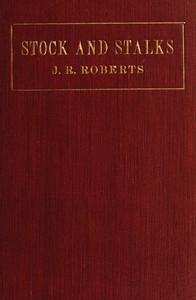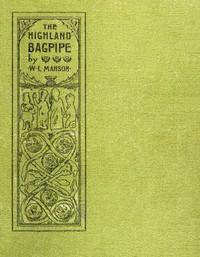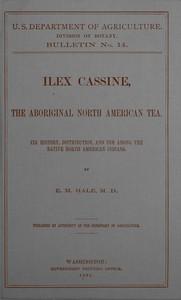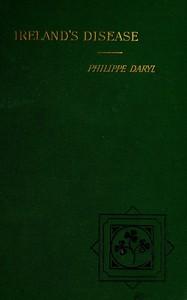|
|
Read this ebook for free! No credit card needed, absolutely nothing to pay.Words: 10700 in 3 pages
This is an ebook sharing website. You can read the uploaded ebooks for free here. No credit cards needed, nothing to pay. If you want to own a digital copy of the ebook, or want to read offline with your favorite ebook-reader, then you can choose to buy and download the ebook. d show in your work? Any or all of them would impair your efficiency and lessen your ability.'" SUGGESTIONS FOR CONSTRUCTING A BARN. Since there is so much information available concerning construction of barns, it is not necessary for me to discuss it here except to criticize the standard forms. On most farms at hay-making time there is no time to haul hay to the dairy barn so it is stacked in the field and hauled in during the winter. Many large dairy barn hay mows are constructed at a great deal of expense and stand empty most of the time in this climate. Before building large, expensive barns it might be well to consult those who have built to see how they are getting along. On an average farm I would suggest a one story shed for the cows built as a lean-to or butting up against a hay shed. This hay shed need not be very large. In most expensive barns there is installed a litter-carrier that runs on a track. If I were going to use a litter-carrier at all I would have the thing so that it could be let down below the level of the gutter and shove the manure down the gutter into it. This means would save all the liquid manure which is more valuable and would save the effort required to lift the manure with a shovel. When full the carrier could be hoisted, run on the track, and dumped into the wagon or wherever desired. But why use a carrier? Why not have the gutters run through the side of the barn and a wagon or manure spreader standing beneath? It is very easy to push the manure from ten cows down the gutter. Two gutters could run into one wagon which would be left standing outside of the barn on lower ground. The barn could either stand on a side hill or a place could be dug to run the wagon into. If hogs are to work over the manure, a concrete basin should be constructed to hold it. The feed trough should be so made that it may be used to water the cows during cold weather. MILKING The cow's milk is partly manufactured in the udder at the time it is being drawn. The process is like digestion and is interfered with by any nervous tension or shock. The prick of a pin that will make a cow jump at the time of milking has been known to greatly reduce the butterfat of the milk given and at the same time to reduce the supply. Shepherd dogs that go after cows are likely to perform their labor at a very high cost in milk. A milk stool used as a weapon knocks a lot of money out of the farmer's pocket. A rough milker who irritates a cow causes much trouble also. If I were to judge a dairyman by just one thing I could tell most about him by noticing how well the cows liked to have him milk them. Where a cow has to dance to the jerking of rough hands and listen to profanity of the milker, that is plenty of information to decide that on that farm dairying does not pay. There are few cows that will treat a milker any better than he treats them. For sanitary reasons I do not believe in milking with wet hands, but if a cow's udder is caked, the best cure that I know is to draw the milk into the hands very slowly and rub it into the caked udder until it is absorbed through the skin. I do not know or care why, but there is something about a cow's milk that is good for her caked udder when applied to the outside. One treatment of an hour's duration, milking the milk a stream at a time and working it into the caked udder, is often sufficient to cure even bad cases. Cow's teats should never be allowed to get sore, for clean milk can not be produced from sore, bleeding teats. It may be necessary to apply antiseptic medicines when they are sore, but a good way to keep the teats soft and pliable so the cow will not be irritated by milking is to take the last streams or two in the udder, milk it into the hand and use it to rub into the teat. The solids in the last streams of milk are about one-half butterfat and this greases the teat with the best kind of grease that I know. Having employed a great many men on the farm I have found from experience that two out of three do not know how to milk. Of these, some can be taught but many are not worth bothering with. Many are too rough and many do not seem to be able to get all the milk from the udder. To get all the milk from one quarter of the udder the milker should use both hands, using one hand above the teat to squeeze the milk into the teat and with the other hand milk it into the pail. MILK PRODUCTS Every milk producer should make some study of the principal products that are made from milk, for such information may help to market it to a better advantage. Figuring that butter contains 80% fat for the minimum which allows for the maximum amount of water, the following amount may be obtained from 100 pounds of milk: Free books android app tbrJar TBR JAR Read Free books online gutenberg More posts by @FreeBooks

: Ilex cassine the aboriginal North American tea by Hale Edwin M Edwin Moses - Aquifoliaceae; Ilex vomitoria; Indians of North America Food Southern States; Black drink@FreeBooksThu 08 Jun, 2023
|
Terms of Use Stock Market News! © gutenberg.org.in2025 All Rights reserved.






